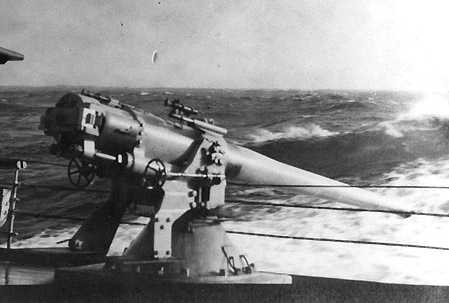|
During World War II, these guns were used to arm some cargo ships, store ships and unclassified auxiliaries (IX). They were also used in emergency coastal defense batteries. The Mark 5 was a built-up gun while the Mark 6 was to a simpler design, replacing the earlier gun's jacket, chase hoop and locking ring with a single jacket. Both Marks used a side-swinging Welin breech block with Vickers breech mechanisms. |

Starboard waist gun on S.S. Saint
Louis in December 1917
|
| .
|